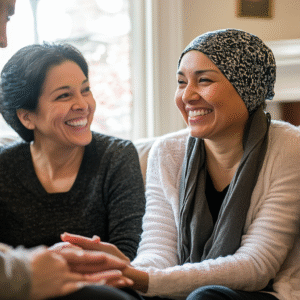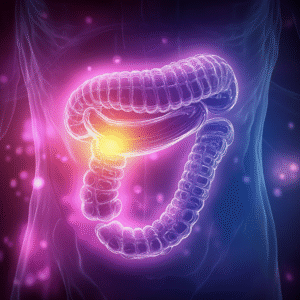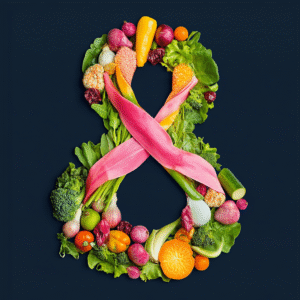When individuals receive a diagnosis of cancer, they often find themselves thrust into a world of medical appointments, treatments, and complex emotions. Traditional therapies—such as chemotherapy, radiation, and surgery—play an essential role in combating cancer on a biological level. However, many accounts from survivors and healthcare practitioners alike suggest that internal transformation and lifestyle changes can play a significant part in supporting these treatments. While no one can guarantee a cure through lifestyle adjustments alone, the potential impact of diet, stress management, emotional well-being, and mindset has become an increasingly common topic of discussion within and beyond clinical settings.
The Power of Personal Agency
One key aspect of lifestyle transformation is the concept of personal agency, which refers to an individual’s ability to make choices and influence outcomes in their own life. In the context of cancer care, personal agency might manifest as taking proactive steps—conducting research on various therapeutic options, asking more questions during medical consultations, or seeking emotional support. Rather than viewing themselves solely as passive recipients of medical intervention, patients who embrace a proactive stance often report feeling more empowered and resilient.
Embracing personal agency does not mean rejecting medical advice. On the contrary, it can involve collaborating closely with healthcare professionals, becoming informed about both standard and supportive therapies, and engaging in regular follow-up appointments. By balancing expert guidance with one’s own careful lifestyle adjustments, individuals can feel they have a more comprehensive approach to healing.
Dietary Shifts and Nutritional Support
One of the most frequently discussed lifestyle changes involves a shift in diet. Many cancer survivors who have experienced extended remission stories note that switching to a more nutrient-dense, less processed way of eating seemed to help them feel stronger, have better energy levels, and sometimes better tolerate their treatments. This may include:
- Increased Fruits and Vegetables: Colorful produce—rich in vitamins, minerals, and antioxidants—is often emphasized. Berries, leafy greens, bell peppers, tomatoes, broccoli, and kale are just a few examples of foods that can be integrated into meals to increase the intake of beneficial compounds.
- Reduced Processed Foods and Sugars: Processed and sugary foods may promote inflammation or provide “empty calories” that lack essential nutrients. Many opt to limit sweets, refined grains, and highly processed snacks in favor of whole grains, lean proteins, or plant-based protein sources like legumes and nuts.
- Healthy Fats: Some prefer nuts, seeds, avocados, or fatty fish as sources of beneficial fats, believing these can help maintain healthy cell function. Others follow specific nutritional plans that might involve careful management of carbohydrate or protein intake, depending on individual tolerance and physician recommendations.
- Hydration: Drinking adequate water is another vital aspect, helping the body detoxify and supporting overall metabolic function. While hydration may seem straightforward, maintaining fluid balance is crucial, especially during cancer treatments that can cause dehydration or kidney strain.
Though no single diet can guarantee remission, there is a growing consensus that a more wholesome nutritional approach may support the body’s inherent healing capacity. This angle complements, rather than replaces, conventional treatments.
Stress Management and the Body-Mind Connection
Cancer is not solely a physical challenge; it also places a heavy emotional burden on individuals and their support networks. Stress management techniques thus emerge as another pillar of internal transformation. Research on the body-mind connection suggests that chronic stress can hinder the immune system and worsen fatigue. Conversely, effective stress relief may allow the body to function more efficiently.
Some common stress management strategies include:
- Mindfulness and Meditation: Setting aside a few minutes each day for quiet reflection or guided meditation can help calm anxious thoughts, slow the heart rate, and promote a sense of inner peace.
- Breathing Exercises: Simple techniques such as inhaling deeply for a count of four, holding for a moment, and exhaling slowly can ground the individual. This practice may reduce the heart rate and lower stress hormones in the bloodstream.
- Yoga or Gentle Movement: Low-impact activities like yoga, tai chi, or light stretching can help alleviate tension stored in muscles and improve circulation. They also encourage mindful awareness of the body.
- Nature Immersion: Spending time outdoors, whether through short walks, gardening, or simply sitting in a park, can foster relaxation. Many people report feeling energized and more positive after time spent in natural surroundings.
By reducing stress, individuals may find they sleep better, handle side effects of treatments more effectively, and maintain a steadier emotional state.
Emotional Healing and Support
Emotions play a critical role in how individuals cope with serious illnesses. Those who discuss lifestyle transformations often emphasize the importance of facing fear, anger, sadness, or guilt rather than suppressing them. This process may involve:
- Therapy or Counseling: Professional guidance provides a space to unpack traumatic or unresolved emotional issues. Therapists trained in oncology-related concerns can offer coping strategies and help patients navigate the emotional roller coaster that often accompanies diagnosis, treatment, and recovery.
- Support Groups: Whether in-person or online, connecting with others who share similar experiences can be deeply validating. Group members can exchange practical tips on everything from dietary ideas to managing relationships during treatment, and simply listening to others can reduce feelings of isolation.
- Creative Outlets: Activities like painting, writing, making music, or dancing can serve as cathartic ways to process deep emotions. By channeling inner turmoil into an external form, many find they experience significant relief and better clarity.
- Open Communication: Sharing feelings with loved ones, whether it’s fear of a new treatment or relief after good medical news, can strengthen connections and foster a more supportive home environment. Encouraging honest dialogues can also help family and friends understand the patient’s experience, paving the way for more meaningful help.
Acknowledging and working through emotional struggles can reduce psychological stress, which in turn may positively influence physical well-being. While there is no universal formula, the overarching principle is that emotional health is intertwined with bodily health.
The Power of Social Bonds
Lifestyle changes aimed at achieving remission often include a focus on social connections. Humans are social creatures, and isolation can exacerbate the toll cancer takes on emotional and physical health. A robust support network can foster a sense of belonging and hope. Some ways people cultivate social bonds include:
- Close Friendships and Family Ties: Loved ones can help with practical tasks, such as meal prep or transportation to medical appointments. Emotional support from those who care deeply can be a powerful motivator.
- Community Groups: Churches, community centers, or extracurricular clubs can provide a safe place to meet peers, share experiences, and form new friendships. For those uncomfortable with formal groups, even small gatherings or shared hobbies can impart a sense of camaraderie.
- Volunteer Work: Some individuals find meaning and purpose in volunteering, whether in hospitals, charitable organizations, or local causes. By helping others, they often derive personal fulfillment that can help them stay positive during their own health struggles.
Cultivating positive social interactions can reduce stress and feelings of loneliness, providing a more nurturing atmosphere in which healing may occur.
Mindset and Inner Beliefs
Many personal accounts of lifestyle transformation include an emphasis on mindset. A sense of hope, optimism, or spiritual belief can grant individuals the energy to persevere through physically and emotionally demanding treatments. This internal shift can take many forms:
- Affirmations and Positive Self-Talk: Replacing thoughts like “I can’t handle this” with “I am doing my best each day” or “My body is healing” can reduce defeatist attitudes. While it may sound simple, consistent reframing of one’s internal dialogue can gradually lift moods and cultivate resilience.
- Goal-Setting: Individuals who set achievable goals often report feeling more motivated. These objectives might be as simple as maintaining a daily walk, meditating each morning, or finishing a particular art project. Accomplishing these goals can bring a sense of progress and control.
- Spiritual and Faith Practices: For many, faith or a sense of spirituality offers comfort and perspective. This can encompass formal religious traditions, personal meditation routines, or simply a belief in a higher force. Such practices can help alleviate existential fears and encourage a broader sense of hope.
- Journaling: Keeping a journal allows for introspection and tracking personal growth. Reflecting on daily thoughts, struggles, and victories can illuminate patterns in one’s mindset and encourage further self-awareness.
Though none of these mindset shifts guarantee remission, they can guide individuals toward more hopeful and engaged ways of navigating their cancer journey.
Integrating Alternative and Complementary Practices
Alongside standard cancer treatments, some individuals explore complementary therapies, which might include acupuncture, massage, or energy work. The rationale is that these therapies could help manage side effects such as pain, nausea, or anxiety. Those who incorporate these modalities typically see them as part of a larger lifestyle overhaul, rather than a replacement for conventional medicine.
For example, acupuncture is sometimes used to address chemotherapy-induced nausea or neuropathy. Massage therapy may help reduce stress, alleviate muscle tension, and improve overall relaxation. Practices like reiki or reflexology aim to balance the body’s energetic fields, offering comfort and sometimes a deeper sense of calm. While the scientific evidence varies for these approaches, many patients report subjective improvements in quality of life, which can support overall treatment adherence and emotional stability.
Environmental Factors and Detoxification
Lifestyle changes can also extend to one’s environment. The idea of “detoxifying” not only refers to dietary cleanses or supplements but also to reducing exposure to harmful chemicals or substances in the home. Some steps individuals take include:
- Avoiding Harsh Household Cleaners: Choosing natural, fragrance-free options or homemade cleaning solutions to limit contact with potential carcinogens or irritants.
- Using Air Filters: Ensuring indoor air quality is as clean as possible, especially if one lives in areas with high pollution or uses heating and cooling systems that recycle indoor air.
- Minimizing Plastic Use: Some people opt for glass or stainless steel containers instead of plastic to reduce exposure to chemicals like bisphenol A (BPA), which may disrupt hormones.
- Incorporating Plants: Indoor plants such as spider plants or peace lilies can help purify indoor air and add a calming aesthetic to living spaces.
While the direct influence of these changes on cancer outcomes is challenging to quantify, many find that reducing toxic exposures offers a sense of control and aligns with the overall philosophy of creating a healthier, more supportive environment for the body.
Sleep and Recovery
Another essential but often overlooked aspect of lifestyle transformation is sleep quality. A good night’s rest is fundamental for cellular repair, emotional regulation, and immune function. People facing cancer may experience disrupted sleep patterns due to pain, anxiety, or side effects from medication. They might try strategies such as:
- Establishing a Bedtime Routine: Consistent bedtimes, avoiding screens before sleep, and engaging in a calming activity like reading or gentle stretching can signal to the body that it’s time to rest.
- Addressing Pain or Discomfort: Speaking openly with healthcare providers about nighttime discomfort can lead to adjustments in medication or suggest therapies like specialized mattresses or pain-management techniques.
- Exploring Relaxation Methods: Techniques like progressive muscle relaxation or guided imagery can prepare the mind and body for sleep, often making it easier to drift off and stay asleep.
By consistently prioritizing restful sleep, the body receives the regenerative benefits it requires, potentially aiding the healing process during active cancer treatment or remission maintenance.
The Holistic View
When individuals describe how lifestyle changes have supported their cancer treatment, they frequently emphasize that it’s not about one single factor. Instead, it’s the synergy among dietary improvements, stress management, emotional release, strong social support, and a hopeful mindset. This holistic viewpoint respects the complexity of cancer, recognizing that biology alone does not define a person’s overall capacity to heal or cope.
Some accounts mention that even if these lifestyle changes do not guarantee remission, they still enhance day-to-day quality of life. People often experience greater energy, more stable moods, and a deeper appreciation for small moments of joy. They may cultivate stronger bonds with loved ones and discover untapped personal strength. Thus, while remission is a desired goal, the journey itself can become richer and more meaningful, supported by an integrative lifestyle approach.
Balancing Realism and Hope
It’s essential to acknowledge that not everyone who embraces lifestyle changes will experience complete remission. Cancer remains a complex disease influenced by genetic factors, the stage of detection, treatment efficacy, and countless other variables. However, many argue that maintaining realistic optimism and committing to beneficial lifestyle habits can significantly improve emotional well-being and possibly enhance physical resilience.
Healthcare providers often caution that these strategies should always complement, not replace, evidence-based treatments. Ultimately, a combination of professional guidance and personal initiative is key. In this way, individuals can strike a balance that honors both the seriousness of their medical condition and the potential of internal transformation to support healing.
Conclusion
The idea that internal transformation and lifestyle changes can play a vital role in cancer treatment and remission has gained momentum as more individuals share their experiences. By shifting toward healthier diets, managing stress, addressing emotional needs, building supportive communities, and fostering a resilient mindset, many feel they are better equipped to face the rigors of conventional therapies. These changes do not promise a miracle cure, but they do offer a holistic path toward a more empowered and meaningful journey.
Over time, research may clarify how specific lifestyle components influence treatment outcomes, shedding light on which combinations are most effective. Until then, the collective testimonies of those who have traveled the path of serious illness highlight the profound ways in which everyday habits, thoughts, and emotional states shape the healing experience. For anyone touched by cancer, the possibility of complementing medical treatments with internal transformation stands as a source of hope, courage, and renewed determination.


